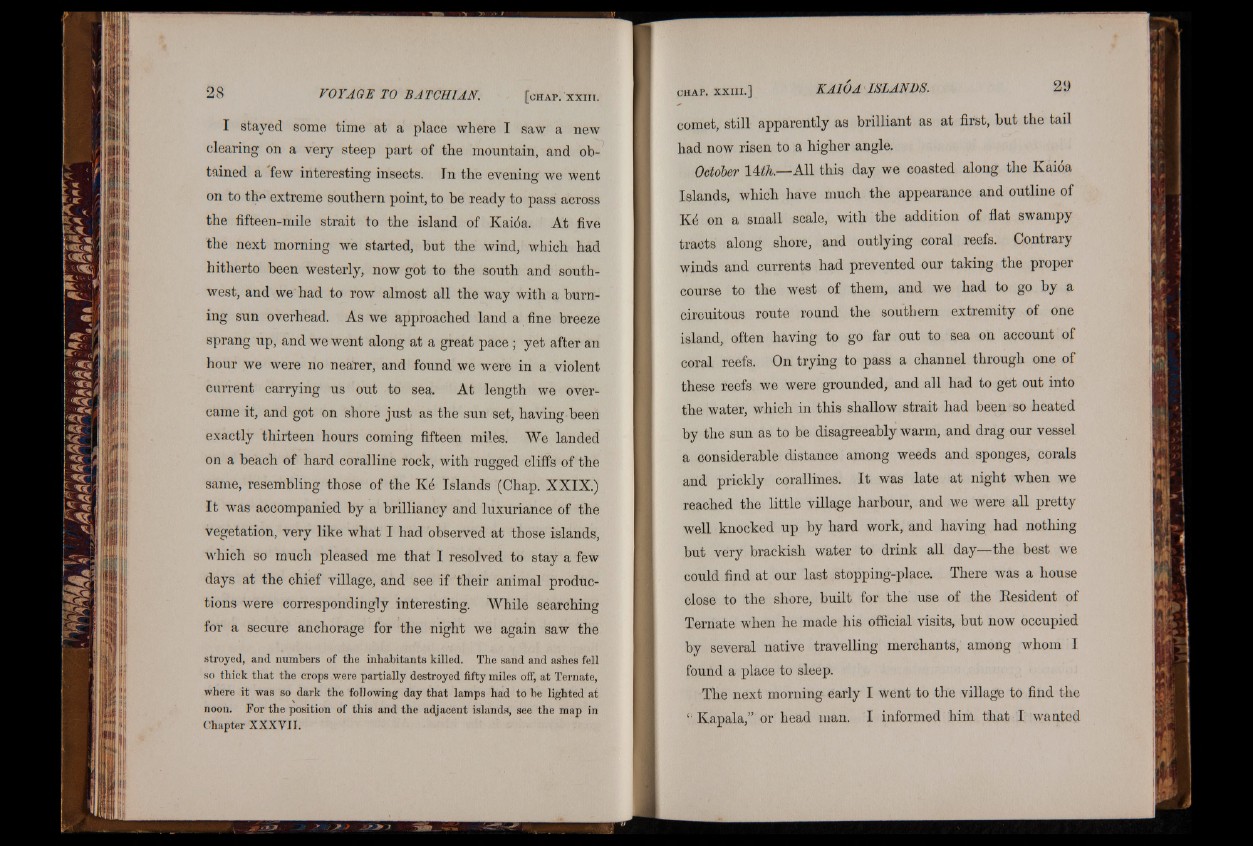
I stayed some time at a place where I saw a new
clearing on a very steep part of the mountain, and obtained
a 'few interesting insects. In the evening we went
on to thf extreme southern point, to be ready to pass across
the fifteen-mile strait to the island of Kai6a. At five
the next morning we started, but the wind, which had
hitherto been westerly, now got to the south and southwest,
and we had to row almost all the way with a burning
sun overhead. As we approached land a fine breeze
sprang up, and we went along at a great pace ; yet after an
hour we were no nearer, and found we were in a violent
current carrying us out to sea. At length we overcame
it, and got on shore just as the sun set, having-been
exactly thirteen hours coming fifteen miles. We landed
on a beach of hard coralline rock, with rugged cliffs of the
same, resembling those of the K6 Islands (Chap. XXIX.)
It was accompanied by a brilliancy and luxuriance of the
vegetation, very like what I had observed at those islands,
which so much pleased me that 1 resolved to stay a few
days at the chief village, and see if their animal productions
were correspondingly interesting. While searching
for a secure anchorage for the night we again saw the
stroyed, and numbers of the inhabitants killed. The sand and ashes fell
so thick that the crops were partially destroyed fifty miles off, at Temate,
where it was so dark the following day that lamps had to he lighted at
noon. For the position of this and the adjacent islands, see the map in
Chapter XXXYII.
comet, still apparently as brilliant as at first, but the tail
had now risen to a higher angle.
October 14th.—All this day we coasted along the Kaioa
Islands, which have much the appearance and outline of
K<$ on a small scale, with the addition of flat swampy
tracts along shore, and outlying coral reefs. Contrary
winds and currents had prevented our taking the proper
course to the west of them, and we had to go by a
circuitous route round the southern extremity of one
island, often having to go far out to sea on account of
coral reefs. On trying to pass a channel through one of
these reefs we were grounded, and all had to get out into
the water, which in this shallow strait had been so heated
by the sun as to be disagreeably warm, and drag our vessel
a considerable distance among weeds and sponges, corals
and prickly corallines. I t was late at night when we
reached the little village harbour, and we were all pretty
well knocked up by hard work, and having had nothing
but very brackish water to drink all day—the best we
could find at our last stopping-place. There was a house
close to the shore, built for the use of the Resident of
Ternate when he made his official visits, but now occupied
by several native travelling merchants, among whom I
found a place to sleep.
The next morning early I went to the village to find the
Kapala,” or head man. I informed him that I wanted